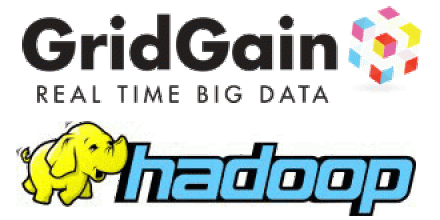GridGain Blog
Few days ago I blogged about how GridGain easily supports starting many GridGain nodes in the single JVM - which is a huge productivity boost during the development. I've got a lot of requests to show the code - so here it is. This is an example that we are shipping with upcoming 4.3 release (entire source code):
[source lang="java" title="Micro cloud example"]
import org.gridgain.grid.*;
import…
One of the features in GridGain's In-Memory Data Platform that often goes unspoken for is ability to launch multiple GridGain's node in the single JVM.
Now, as trivial as it sounds... can you start multiple JBoss or WebLogic or Infinisnap or Gigaspaces or Coherence or (gulp) Hadoop 100% independent runtimes in the single JVM? The answer is no. Even for a simple test run you'll have to start…
Lately there has been lots of noise about "Real Time" Big Data. Lots of companies that associate themselves with this term are generally in analytical space and to them it really means "low-latency" for analytical processing of data which is usually stored in some warehouse, like Hadoop Distributed File System (HDFS). To achieve this they usually create in-memory indexes over HDFS data which…
GridGain 4.0.1 has been released this Monday. This is a point release that includes several bug fixes as well as number of new features.
With 4.0.1 we are introducing native support for .NET with our C# Client. C# Client provides native .NET/C# APIs for accessing both GridGain's In-Memory Data Grid and Compute Grid from outside of the GridGain topology context. Internally it's deferring to…
Over the past few months I’ve been repeatedly asked on how GridGain relates to Hadoop. Having been answering this questions over and over again I’ve compacted it to just few words:We love Hadoop HDFS, but we are sorry for people who have to use Hadoop MapReduce.Let me explain.Hadoop HDFSWe love Hadoop HDFS. It is a new and improved version of enterprise tape drive. It is an excellent technology…
One of the unique features of our upcoming GridGain 1.0 product is AOP-based integration.Since the beginning, the integration part of Grid Computing products was a sore point. APIs are complex, non-intuitive and vendor generally assumed that people writing grid-enabled software would be willing to spend a significant time on grid-enabling process (changing their applications, learning complex…
When thinking about how Grid Computing software can be architected there are many angles one can look from. One such angle that is rarely seen is whether to consider the software architecture from the "Resource" point of view, or from the "Task" point of view.As much as abstract it sounds this question is rather very fundamental to how your Grid Computing software will be used. Let me explain by…
The usual answer is - Google it... Oh, you did? Well, the odds are that you are not any closer to the answer - and you are not alone.Working on Grid Computing for the last 5 years I've accumulated my own share of strange looks on people faces when trying to describe to them the grid computing idea. What is fascinating is that the actual concepts behind Grid Computing are very familiar, simple and…
Over the last 12 months I’ve accumulated plenty of “conversations” where we’ve discussed big data analytics and BI strategies with our customers and potential users. These 5 points below represent some of the key take-away points about current state of analytics/BI field, why it is by in large a sore state of affairs and what some of the obvious tell telling signs of the decay.
Beware: some…
In-memory processing is becoming a business necessity in a similar way as collecting and processing ever increasing data sets (a.k.a Big Data) has become a business "must have" rather than just a simple technology in the last five years. Both of these trends are intervened in an interesting ways. Let me explain...
1. Storing Necessitates Processing
The initial foray into BigData for many…






